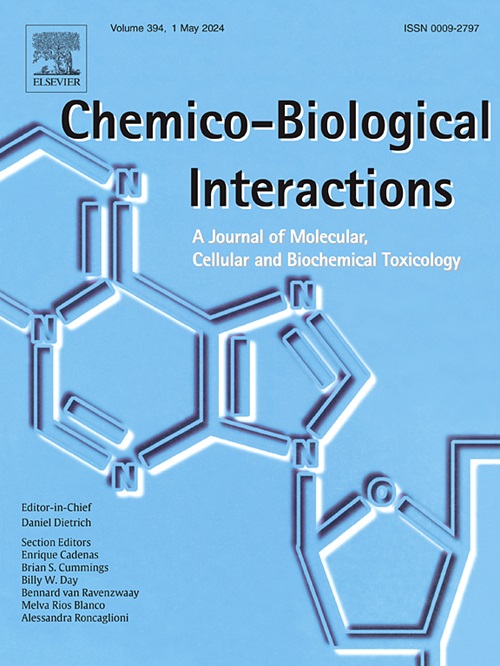Cholinesterase-based inhibitors as multitarget small molecules for the therapy of Alzheimer's disease
IF 4.7
2区 医学
Q1 BIOCHEMISTRY & MOLECULAR BIOLOGY
引用次数: 0
Abstract
Herein, we have summarized the most significant results that we have communicated from our laboratories in the last thirty years, highlighting the most potent and attractive ChEIs based hit(lead)-Multitarget Small Molecules, such as (S)-p-methoxytacripyrine (1), ASS234 (2), Contilisant (3), and Contilistat (4), that we have identified in the search for new chemical entities for the therapy of Alzheimer's disease.
基于胆碱酯酶的多靶点小分子抑制剂治疗阿尔茨海默病。
在此,我们总结了过去三十年来从我们的实验室获得的最重要的结果,重点介绍了我们在寻找治疗阿尔茨海默病的新化学实体中发现的最有效和最有吸引力的基于hit(lead)-多靶点小分子的ChEIs,如(S)-对甲氧基他吡林(1)、ASS234(2)、conconisant(3)和conlistat(4)。
本文章由计算机程序翻译,如有差异,请以英文原文为准。
求助全文
约1分钟内获得全文
求助全文
来源期刊
CiteScore
7.70
自引率
3.90%
发文量
410
审稿时长
36 days
期刊介绍:
Chemico-Biological Interactions publishes research reports and review articles that examine the molecular, cellular, and/or biochemical basis of toxicologically relevant outcomes. Special emphasis is placed on toxicological mechanisms associated with interactions between chemicals and biological systems. Outcomes may include all traditional endpoints caused by synthetic or naturally occurring chemicals, both in vivo and in vitro. Endpoints of interest include, but are not limited to carcinogenesis, mutagenesis, respiratory toxicology, neurotoxicology, reproductive and developmental toxicology, and immunotoxicology.

 求助内容:
求助内容: 应助结果提醒方式:
应助结果提醒方式:


